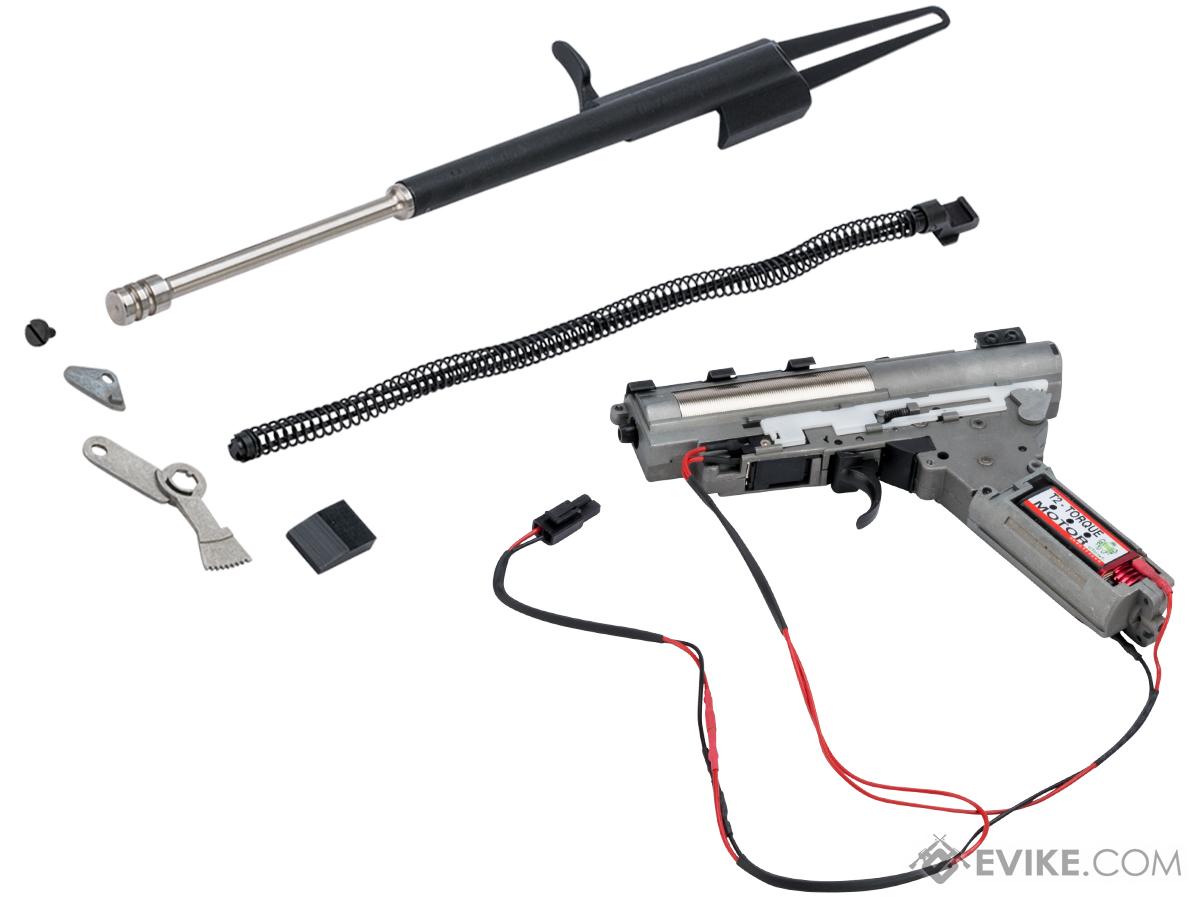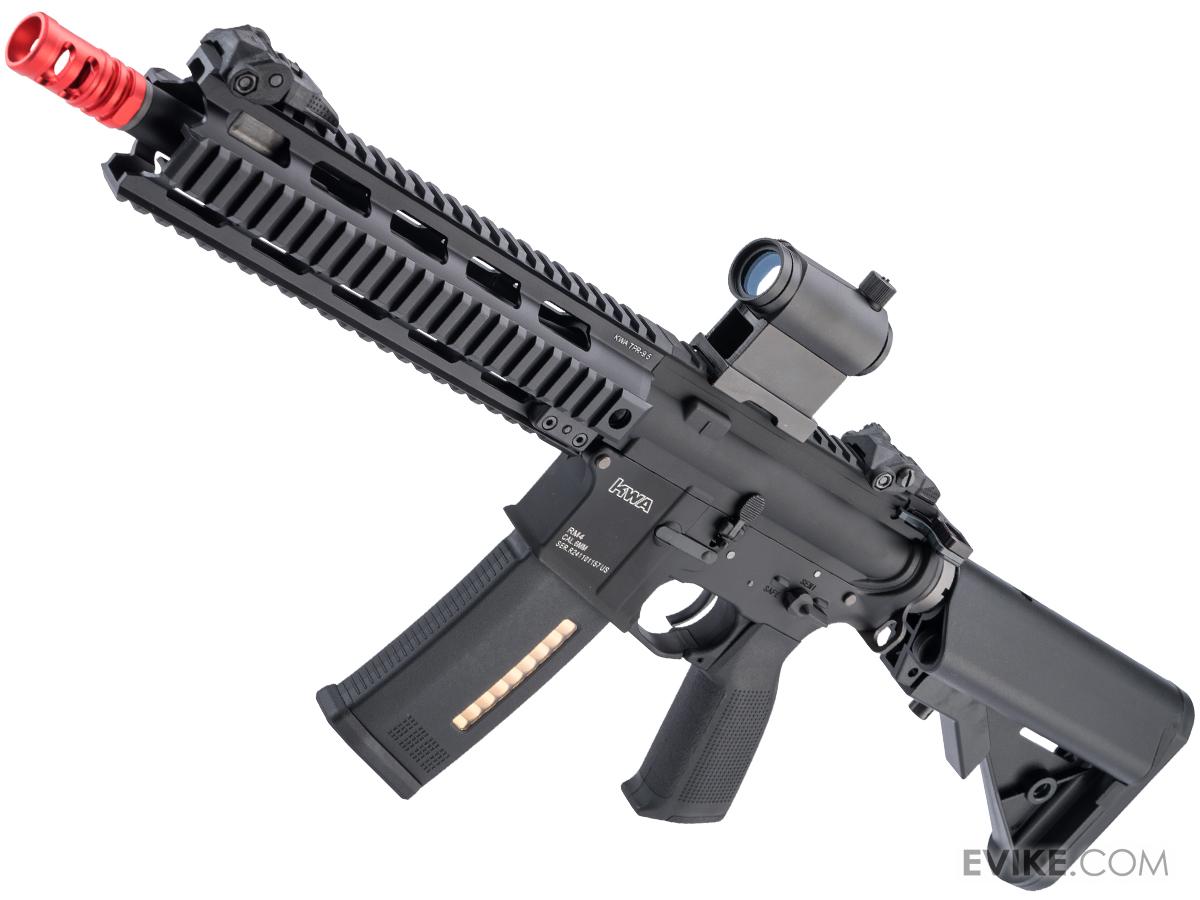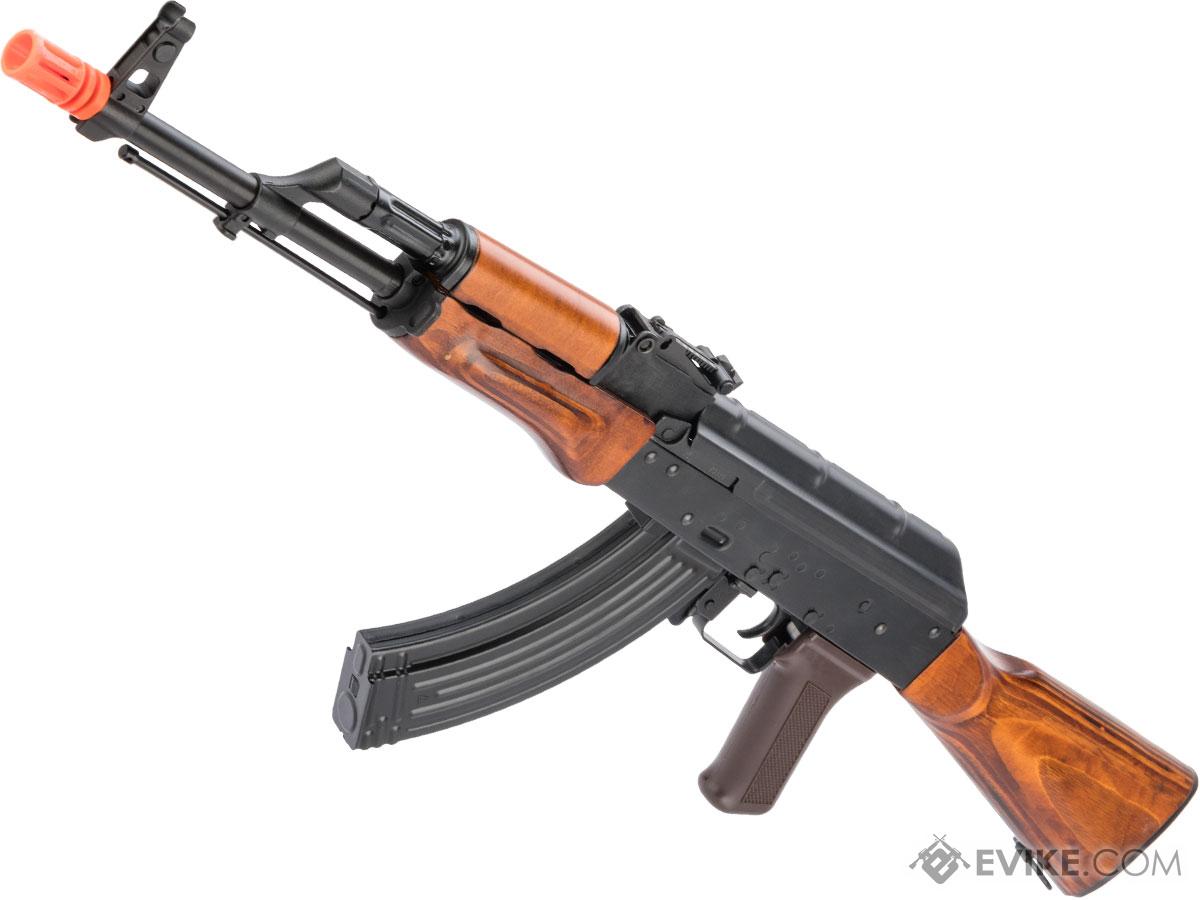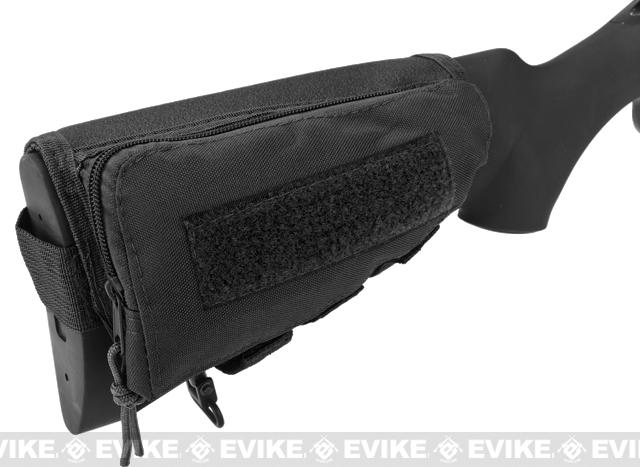Man… where do I even begin? This is KWA’s magnum opus of rifle design, and has the undeniable honor of being the most impressive gun I’ve had the honor to tech on. KWA has an excellent reputation for providing high end AEGs that feel amazing and are built tough enough to withstand just as much abuse as a real steel firearm. Even with the inclusion of simulated recoil, their AEG 3.0 gearbox lives up to their legendary standard and then some.
What makes the AEG 3.0 system so impressive is that it manages to offer a solid recoil kick without changing anything about the KWA gearbox itself. The entire recoil apparatus is simply a reciprocating weight housed inside the buffer tube. It achieves a “recoil impulse” by using two AEG springs, one in the standard position behind the piston, and one on the opposite end of the reciprocating mass that divides them. When a shot is fired, the mass is propelled backwards, sending energy into your shoulder. The AEG spring on the opposite end of it then pushes it back into position, essentially providing simulated recoil by adding a weight to the rifle’s internal spring. The standard KWA gearbox itself is still yours to upgrade with a GATE TITAN optical MOSFET, aluminum compression parts, and even higher speed gears! What’s always left me fascinated about the KWA AEG 3.0 system is how little stress this recoil mechanism actually puts on the internal components. KWA has still opted for polymer teeth pistons in their stock configuration, which is an outrageously bold move for something that, theoretically, should require sturdier materials. Despite the polymer teeth, these guns have developed an incredible reputation over the years for their reliability. They’re definitely doing something right here!
For the more technically minded out there, the KWA AEG 3.0 system opens itself to having its recoil system adjusted quite easily. By unscrewing the cap at the end of the buffer tube (the flathead, not the philips in the center!), it allows you fully remove your AEG spring and recoil system. At the front lies your rifle’s primary FPS spring, then the large brass mass, then another half length AEG spring that sits at the rear of the whole system. The amount of recoil felt is dependent on both the length and strength of the springs spaced on each side. To get the most recoil out of your KWA AEG 3.0, use a short but stiff spring as your main spring, and a lighter but longer half-length spring in the rear position. This will cause the piston in your KWA to compress the rear spring first, accelerating how fast the reciprocating mass will put impact into your shoulder. Keep in mind, the more “shock” your rifle experiences, the more easily screws begin to loosen themselves. I highly recommend putting a dab of removable loctite on any screws prone to coming loose in your KWA. Also, stronger springs in your recoil assembly will put more wear on your piston. That polymer piston is definitely tough, but it’s probably a good idea to upgrade it to a steel-tooth if you plan on experimenting with spring strength. Another way to increase system recoil is a stronger motor and higher speed gear ratio. The faster that mass is reciprocated, the more recoil you’re going to feel. This method is a more risky operation, but can also greatly improve trigger response and rate of fire if done correctly. Be warned! If your rate of fire is too high, your gears might engage your piston system prematurely. This will devastate your gearbox. While this can happen with any AEG system, the KWA AEG 3.0 is substantially more prone to it due to the laggier nature of the piston system. Take caution and keep your RoF humble!
With the right setup, these recoil systems can come pretty close to the kick of a GBBR. Not bad for an AEG!
Personally, I much prefer the KWA recoil system over other competing M4 recoil systems such as the Tokyo Marui NGRS. Not only does the KWA have a nicer build quality straight out of the box, but it is also far easier to adjust and modify due to its compatibility with many standard Version 2 gearbox parts. Plus, the NGRS still doesn’t have a quick change spring system. If you plan on it shooting anywhere over 290 FPS out of the box, be prepared to delve into one of the most complicated gearboxes on the whole market! If simplicity and modularity is more your style, then the KWA AEG 3.0 is the recoil system for you!
Around the time the LCT EBB system came out, LCT themselves released a video of one of these new AKs being stress tested in full auto. The footage was impressive, displaying a level of simulated recoil that was comparatively leagues above the rather tame experiences offered by previous generations of EBB AKs. In these older models, the bolt's motion was more of a visual gimmick than a tangible force; it moved, but didn’t quite deliver the smack that AK lovers crave.
Upon their initial release, these innovative EBBs lived up to the hype concerning recoil, providing an immersive, punchy feedback that had long been desired by AK enthusiasts. Yet, this achievement seemed to come with its own set of complications. The vigorous action of the LCT EBBs gave the rifles a tendency to "shake themselves apart," with internal components, especially screws, loosening over repeated use. This, combined with a less-than-impressive rate of fire, initially made many hesitant to pick up these rifles early on.
However, LCT is not a company to rest on its laurels. Known for their quiet yet impactful innovations, the brand has been hard at work refining and improving its EBB system. Now, in 2024, it appears that LCT has addressed many of the earlier concerns, making significant enhancements to the durability and performance of their EBB AK series. Upon revisiting the latest iterations of these airsoft guns, I've found myself genuinely impressed by the advancements LCT has made. Let's dive deeper into these refinements and what they mean for airsofters looking to pick up a viable primary with a little more immersion!
LCT Airsoft Complete Gearbox w/ Electric Blowback and Recoil Kit for AK Series Airsoft AEG (Model: Long Bolt)


Taking a look at the recoil components, you’ll likely notice the authentically long steel AK bolt. Much like the Kalashnikov original, that entire mechanism reciprocates with every shot, giving the LCT EBB considerable muzzle flip and a degree of feedback deserving of a 7.62x39mm hurling rifle. The picture depicted above is out of date, but does serve as an aid to explain what changes have been made to the system. Here are the notable ones:
- The piston has been redesigned for greater durability. Specifically, the hook that latches onto the mock bolt has been updated.
- The gearbox now features a quick change spring system!
- The motor strength has been improved.
- Right out of the box, every screw has removable loctite applied to it
- Many other minor gearbox design changes, such as making the dust cover area release more standard to the basic V3 design.
Sifting through airsoft forums online, I find that the most prevailing opinion about LCT is “excellent externals, poor internals.” Three years ago, I had much the same thoughts regarding this brand. Now that I’ve opened up and used some of their recently updated releases, my perspective has completely changed. The stock range and accuracy on these rifles are impressive for how basic the hop components are, and just about every LCT AK I’ve taken out of the box and shot has been shimmed pretty smoothly right from the factory. While I wouldn’t choose it for myself, they even offer the option for your LCT to come pre-installed with a GATE ASTER MOSFET as well now! Much of this rigorous dedication to perfection seems to have carried over to their oft neglected EBB series, and I’m glad to see them in a position that I can recommend.
Still, there is one major drawback this rifle platform has that I must bring up if ever recommending them: The (sometimes) awkward battery space. If your LCT EBB has anything except a non-foldable full stock, it’s going to be wired to the handguard. The handguard is already half occupied by the reciprocating mock bolt, meaning you only have the incredibly tight bottom section of that piece to use for your battery. With the recoil mechanisms power demands, you’re going to be chugging through batteries rather quickly. I strongly recommend going for the full-stock models to save yourself from this headache. Or you could do what I’ve done to mine! I’ve navigated my way through this problem by rewiring it to my foldable skeleton stock and adding a stock pouch for battery space. This was surprisingly tricky, so I only recommend giving this a try if you’re comfortable disassembling your rifle. Here’s the stock pouch I used:
With more and more brands offering high performance AEGs right from the factory for reasonable prices, I find that the “cool factor” of a fast trigger response with a high rate of fire is starting to wear off. I believe the next step for the AEG market is perfection of the EBB system, which KWA and LCT have already taken a massive step forward towards. The KWA, while modular and reliable, still doesn’t kick anywhere near as hard as a GBB. The LCT, while providing impressive recoil, needs a better battery solution to make more of their rifle variants easier to set up right out of the box. Nonetheless, I’m glad these awesome airsoft guns have risen beyond the stigma the airsoft community has built around EBB. Which one do you think would look best in your arsenal?



